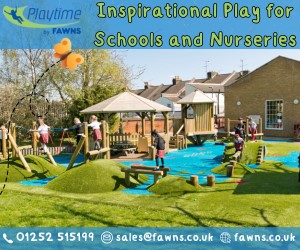‘I regularly see kind people with creative ideas that would benefit others stumble because of basic and avoidable missteps. It’s a heartbreaker!’ says Pamela Walker.
In her book Making a Difference: Setting up Sustainable, Community-Based Projects (Ortus Press), Pamela explains the stages of establishing and maintaining a successful initiative. ‘It’s a straightforward process once you know what to do,’ she says. ‘After 35 years, I had a lot of experience to pass on, but I can’t get to everyone individually, hence the book. It’s a practical toolkit – basic grassroots stuff.’
PTAs can learn from her approach too. Parents’ pockets are only so deep, and new projects can attract funding and support outside the parent community. Having a charity structure in place means you’re not starting from scratch. All it takes is some know-how and ambition.
How do we start the conversation?
PW: Whether the idea comes from the school or the PTA, initial discussions with school leaders will help you understand and define it. For example, if the school asks for funds to help develop a garden, could it include an allotment with some community access? Will there be a sensory garden for SEN pupils? Approach these meetings as an opportunity to prepare for questions that will inevitably come later from community organisations and funders. They are also a chance to practise telling your story in a meaningful way.
Should the PTA do their own research before committing to something the school wants?
PW: Absolutely! People can get fixated on one idea. They may suggest something just because it worked at their previous school or has been an ambition since they first qualified. Resources are finite and the PTA should look into all suggestions carefully before agreeing to spend time and energy.
What roles do we need?
PW: Try to avoid impacting your day-to-day fundraising, ideally by forming a sub-committee. I’d usually recommend aiming for eight or nine people, but if that’s going to be a struggle, there are two roles you really need: someone to focus on communications and social media, and someone with enough time to do research, look at potential funding opportunities and apply for grants. Ask the treasurer and secretary if they can assist, but recruit from outside the parent community if your constitution allows. Even an informal chat with an experienced fundraiser or communications professional will save you hours. Aim for a mix of people who know about the PTA and school, and those who know the local area.
How do we start the process?
PW: Firstly, it’s important to assess what’s known as the ‘unmet need’. Put simply, you should find out if enough people in your area want to access and will benefit from what you are planning. Pull together some statistics about your school’s catchment area: look at indices of deprivation, child poverty, literacy levels and average incomes.
It is also essential to find out what other programmes or services are available in your area to avoid duplicating your efforts.
Who can we approach for more help?
PW: Your local Council for Voluntary Service or Community Action organisations can help you find local charity sector groups and national organisations that are either providing the service you want to offer or helping the beneficiaries you want to support. Ask the local council as they may have someone who supports education.
Make a comprehensive list of people to contact. Then basically speak with everybody and find out everything you can. Ask for introductions to networks that are relevant to your proposed scheme. There’s no point reinventing the wheel. Find people who have done something similar to what you want to do and approach them. You will benefit from learning about what worked, the challenges and where things failed. As a result, you will build links within the communities doing work that’s relevant to your ideas and raise awareness too.
Another approach would be for a PTA to collaborate with other PTAs in their area – for example, if two schools wanted to share a library. Funders would love that sort of partnership working.
Why is this stage so important?
PW: A little extra work at the start will ultimately save you wasting time and effort. For example, during the pandemic, some very well-meaning people set up pantries and food banks. But they didn’t understand that there wasn’t enough surplus food to go round. Careful research would have shown that those areas couldn’t support another food bank.
So, if you want to set up a PTA pantry, join a local food partnership network. Not only will they talk you through the challenges, but they will probably have a bank of relevant research they could share with you, such as user demographics, reasons for using the service and the difference it has made.
You will also make contacts and get insider information on where to source supplies.
What happens next?
PW: Funders have limited resources and tend to support the initiatives that make the biggest difference to the most people. Whether you are hoping to get a grant, sponsorship from a local business or a one-off donation, use your research findings to demonstrate why people should give you money.
What can the school offer?
PW: As well as practical assistance such as providing financial documents for funding applications in good time and allowing you to use the hall for meetings, the school can really help by raising awareness of your project. For example, if you want to start a pre-loved school uniform shop, ask the children to look at why recycling is so important, or to design a poster or write a poem about its benefits. Once the children are fired up, they will go home and tell their parents.
Work with your communications person to spread their work further, perhaps by using the children’s drawings to get local press coverage.
What can we do to ensure success in the long term?
PW: Some initiatives start with a lot of enthusiasm and effort. They secure enough funding for a year or so but suddenly the money runs out. Around six months after you launch, start talking to parents, send surveys and ask for feedback. Find out what’s working for them, what else they need and if the project needs to grow in a different way. Communicate this information to existing funders and start looking at new funding options. Even a playground has ongoing costs. You might organise a regular maintenance day where volunteers help with painting and weeding. The more connections you make, the less you need to burden the parents with it all.
Making a Difference: Setting up Sustainable, Community-Based Projects is available from freeassociationpublishing.com/product/making-a-difference/








.gif)

